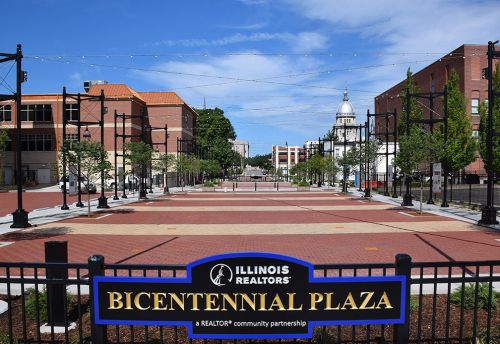Legal Case Studies: September 2021
Legal case studies in this issue:
- Court sides with day care center on claims of prescriptive easement next to railroad line
- Condo declaration did not expressly prohibit Airbnb “licenses” but did prohibit such activity as a business
- Landlord’s breach of commercial lease did not allow tenant to withhold rent
- Private school’s 20-year-old agreement with village to waive tax exemption was unenforceable as against public policy
- Environmental group failed to demonstrate standing in suit against former coal-fired power plant
Research and analysis by Lisa Harms Hartzler,
Sorling Northrup Attorneys
Court sides with day care center on claims of prescriptive easement next to railroad line
In Chicago Title and Trust Company v. Village of Bensenville, 2021 IL App (2d) 200536‑U, a day care center’s rear wall was constructed on its north property line. Contiguous with that wall was a 35-foot-wide strip owned by and adjacent to an operating railroad line. The strip was improved with gravel. It was accessed via an apron from the street and a public sidewalk. The day care center had used the strip since 1992 for employee parking, for garbage truck access to a dumpster, and for vendor deliveries to a rear door. A previous owner had used the strip in a similar manner since 1968. It was the only way for vehicles to reach the rear of the building.
In 2015 the village obtained approval for a “Quiet Zone” along the rail line, which would eliminate the need for trains to sound their horns while approaching grade crossings. To obtain that approval, the village was required to restrict track crossings by vehicles and pedestrians. In accordance with the Quiet Zone plan, the village barricaded the access strip used by the day care center.
The day care center, claiming a prescriptive easement over the strip, sued the village and asked for damages for its loss of use. The trial court granted summary judgment in favor of the village. The day care center appealed.
To establish an easement by prescription, the use of the property must have been “adverse, uninterrupted, exclusive, continuous, and under a claim of right for at least 20 years.” When the origin of the use is not known or shown, there is a presumption of such a right from the long acquiescence of the property owner. Acquiescence requires knowledge of the ongoing use. However, if the property is vacant, open, and unenclosed, there is no presumption of a claim of right. The rationale for this rule is that when the servient owner (the owner of the property over which the easement is claimed) uses the property, it is reasonable to presume that he is aware of a third party’s use of it. Conversely, when no use is being made by the servient owner, he may not even be aware that anyone else is using it.
The day care center argued that it had a presumptive claim of right to use the strip based on the rail line’s active use of the property, of which the strip was a part, for rail service. The appellate court agreed that while the strip was open and unenclosed, it was not vacant. It held that the presumption of a claim of right was applicable, and that the day care center had proven the existence of a prescriptive easement. It reversed the trial court’s judgment.
Condo declaration did not expressly prohibit Airbnb “licenses” but did prohibit such activity as a business
Wood v. Evergreen Condominium Association, 2021 IL App (1st) 200687, involved a question of whether a Chicago condominium association’s declaration and bylaws prohibited a unit owner from using her unit as a short-term rental on Airbnb. Section 7 of the declaration prohibited leases of less than 30 days’ duration and section 11 prohibited any “business” being conducted on the property.
The unit owner first argued that a short-term rental was not a “lease.” Rather, it was merely a “license” to occupy the premises in accordance with Airbnb’s terms of service. The association argued that the declaration’s clear intent was to prohibit short-term occupancy.
The court found that “whether measured by their common and accepted usage or viewed as legal terms of art, ‘lease’ and ‘license’ are not synonyms.” A lease is a definite agreement as to the extent and bounds of demised property. It transfers exclusive possession to the leasee. A license agreement merely entitles a party to use the premises for a specific purpose, subject to the management and control retained by the owner.
An Illinois condominium declaration may impose a restriction that will be presumed valid and upheld unless it is arbitrary, against public policy, or in violation of some fundamental constitutional right of the unit owners. Further, unless the restriction is ambiguous, it is to be construed narrowly and given only the effect that the express language of the covenant authorizes.
The court held that the plain language of the declaration expressly prohibited only short-term leases. It did not mention licenses. The unit owner won that battle.
However, the unit owner lost the war. Her argument that she was not engaging in a prohibited business under the declaration did not prevail.
The court held that providing the use of a condominium unit in exchange for payment satisfied the dictionary definition of a business, i.e., “dealings or transactions of an economic nature.” In addition, the fact that Chicago regulated short-term residential rental intermediaries and advertising platforms, required rentals to be registered and follow various operating requirements, and imposed taxes on short-term transient occupancy provided further evidence that the unit owner was engaged in a business prohibited under the declaration.
Landlord’s breach of commercial lease did not allow tenant to withhold rent
In Greggs USA, Inc. v. 400 East Professional Associates, LP, 2021 ILApp (1st) 200959, a commercial tenant sued its landlord for breach of contract. The plaintiff rented 1375 square feet on the first floor of a 40-story condominium building in downtown Chicago in order to open a bakery and restaurant. The lease provided that all rent was to be paid “without offset or deduction” and that the covenant to pay rent was “independent of every other covenant” in the lease.
The tenant proceeded with renovations but was then prohibited by the building’s condominium association from attaching an air supply system to the building’s existing “black iron” system because it would “cause exhausted cooking fumes to contaminate the air in the building.” The tenant disputed this conclusion but concluded that without being able to connect with the building’s HVAC system, he could not open for business. As a result, he did not pay any rent that would have otherwise been due under the lease. He vacated the premises and filed suit against the landlord, claiming breach of contract for failing to supply a black iron system suitable for his bakery and restaurant.
To recover for breach of contract, a plaintiff must establish four elements: (1) the existence of a valid contract; (2) performance by the plaintiff; (3) breach of contract by the defendant; and (4) resultant injury to the plaintiff. In this case, the court focused on the second element of performance by the plaintiff.
Competent parties to a contract may agree to any terms they choose unless their agreement is prohibited by law or contrary to public policy. A court’s goal is to determine and give effect to the parties’ intent under the contract. Intent is determined exclusively from the contract unless its terms are ambiguous. Ambiguity exists when written terms have more than one meaning but it is not created merely because the litigants disagree about the meaning of their written terms.
In this case, even if the court assumed that the landlord breached a duty regarding the black iron, the tenant had agreed that all rent was to be paid without offset or reduction and that the rent covenant was independent of every other covenant. That obligation to pay rent was clearly stated and indisputable. No principle of contract construction authorized the tenant to disregard that obligation. It was separate and independent from the landlord’s obligations regarding the premises. The tenant must perform its own covenants and then rely on a claim for damages.
The court affirmed judgment for the defendant landlord, which included an award of over $154,000 in back rent, late fees, and attorney fees.
Private school’s 20-year-old agreement with village to waive tax exemption was unenforceable as against public policy
In Keystone Montessori School v. Village of River Forrest, 2021 IL App (1st) 191992, a private school sought a declaratory judgment that its 1998 agreement with a village was unenforceable. The federally tax-exempt school had applied to operate on a parcel that was zoned commercial and did not allow a school as a permitted or special use. The village, which had encouraged the school to locate on the parcel and allegedly pressured the school to back out of a different location already tax-exempt, agreed to issue a planned development permit on the condition that the school enter into an agreement in which it promised to never apply for a property tax exemption.
The school signed the “tax agreement” but by 2002 began attempting to modify it. It formally requested the village to reduce its tax burden at least five times through 2011, arguing changed circumstances had increased its tax obligations while problems with tuition, fundraising, and lending restrictions hampered its operations. Each time, the village refused to amend the tax agreement. By the time the school filed its complaint in 2018, it was paying $96,000 annually in property taxes, its largest budget line item.
“Illinois courts have traditionally upheld the right of parties to freely contract” unless the agreement “is clearly contrary to what the Illinois Constitution, statutes, or judicial decisions have declared to be public policy or it is clearly shown that the contract is manifestly injurious to the public welfare.”
The school argued that the tax agreement prohibiting it from applying for a property tax exemption was unenforceable as contrary to public policy. Both the trial court and the appellate court agreed. The Illinois Constitution provides for real property taxation but allows the General Assembly to exempt property used exclusively for school (and other enumerated) purposes. That exemption is implemented in the Tax Code, section 15‑35, which provides that all property of a school, not sold or leased or otherwise used with a view to profit, is exempt. Both the Constitution and the statute clearly set forth this policy, which benefits the public by exempting schools from property taxes.
The operation of the school on the school’s property, therefore, was explicitly exempt under the Illinois Constitution and Illinois statutes. That status could not be altered by a contract between the village and the school. Consequently, the tax agreement with the village prohibiting the school from applying or accepting a property tax exemption for its property was contrary to public policy, void from its inception, and unenforceable.
Environmental group failed to demonstrate standing in suit against former coal-fired power plant
Prairie Rivers Network v. Dynegy Midwest Generation, 2 F.4th 1002 (7th Cir. 2021), illustrates the strict hurdles an association needs to overcome to litigate on behalf of its members. In this case, the plaintiff (PRN) was an Illinois organization advocating for clean water and healthy rivers. The defendant was a retired coal-fired power plant (Dynegy) that operated from the mid-1950s until 2011. The coal ash produced by the plant over the years was mixed with water and deposited into three unlined pits and continued to hold 3.33 million cubic yards of coal ash at the time of litigation. The pits sat close to the middle fork of the Vermillion River, a navigable water way protected by federal Clean Water Act.
PRN filed a citizen-suit under the statute, alleging that Dynegy’s wastewater discharge permit did not authorize indirect discharges, or seepage, from the pits into the groundwater, which then entered the middle fork of the Vermillion River. PRN alleged that seepage did occur and contained dangerous pollutants that harmed PRN’s individual members’ use and enjoyment of the river.
The federal district court in Champaign dismissed the case on the basis that the Clean Water Act did not regulate groundwater discharges, even when that groundwater connected to surface waters regulated under the Act. PRN filed an appeal to the Seventh Circuit Court of Appeals but then the U.S. Supreme Court agreed to hear a case from Hawaii with the same issue. The Seventh Circuit stayed PRN’s appeal until after the resolution of the other case. The Supreme Court ultimately decided that the Clean Water Act does apply when “the addition of the pollutant through groundwater is the functional equivalent of a direct discharge from the point source into navigable waters.” This decision was good news for PRN.
After the Supreme Court decision, PRN’s appeal in the Seventh Circuit proceeded. However, Dynegy then raised another issue—that PRN had not shown that it had standing to file its complaint in the first place. The requirement of standing to sue is jurisdictional. If the complainant does not have standing, the court has no authority and the complaint must be dismissed.
For standing in federal court, a plaintiff must have suffered an injury in fact that is fairly traceable to the challenged conduct of the defendant and that is likely to be redressed by a favorable judicial decision. An association may sue on behalf of its members even if it cannot show an injury to itself; however, it must show that “(1) at least one of its members would have standing to sue in their own right; (2) the interests it seeks to protect are germane to the organization’s purpose; and (3) neither the claim asserted nor the relief requested requires the participation of individual members.”
PRN’s complaint failed to satisfy the first requirement because it did not name a single member who had suffered an injury that could be redressed by a favorable decision. The court refused to speculate whether an individual member, and not just those individual members as a group who were interested in the issue, actually had standing. The requirement of individual injury is essential.
Although PRN tried to supplement its complaint by filing affidavits from individuals claiming injury, it was too late. The plaintiff at all stages of litigation has the burden of demonstrating standing, which gives the court authority to act. Because the district court had no authority to hear PRN’s complaint in the first place, PRN’s appeal had to be dismissed.
The appellate court affirmed the district court’s dismissal, not on the inapplicability of the Clean Water Act, but on the lack of PRN’s standing to sue.
About the writer: Lisa Harms Hartzler is Of Counsel at Sorling Northrup Attorneys in Springfield. She graduated from the American University Washington College of Law in 1978 and began her legal career in Chicago. She has provided legal support for the Illinois REALTORS’ local governmental affairs program since she joined Sorling in 2006 and focuses her practice on municipal law, general corporate issues, not-for-profit health care law, and litigation support.




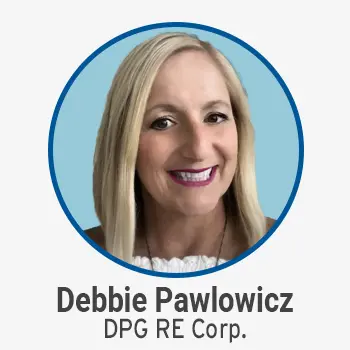
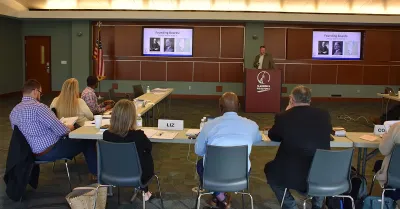 Create professional development programs that help REALTORS® strengthen their businesses.
Create professional development programs that help REALTORS® strengthen their businesses.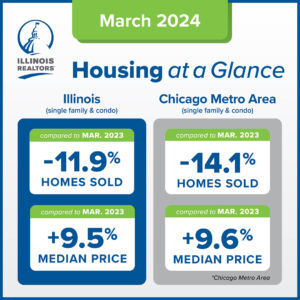
 Protect private property rights and promote the value of REALTORS®.
Protect private property rights and promote the value of REALTORS®.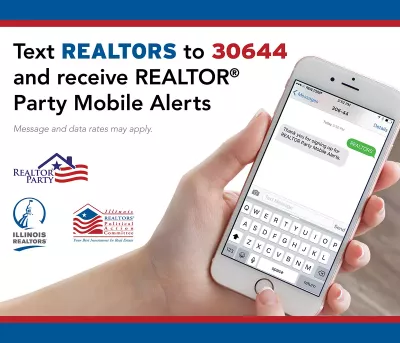
 Advance ethics enforcement programs that increase REALTOR® professionalism.
Advance ethics enforcement programs that increase REALTOR® professionalism.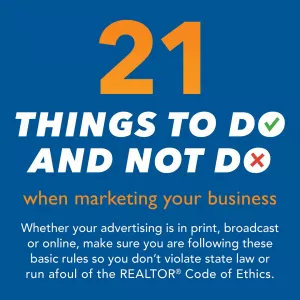
 Protect REALTORS® by providing legal guidance and education.
Protect REALTORS® by providing legal guidance and education. Stay current on industry issues with daily news from Illinois REALTORS®, network with other professionals, attend a seminar, and keep up with industry trends through events throughout the year.
Stay current on industry issues with daily news from Illinois REALTORS®, network with other professionals, attend a seminar, and keep up with industry trends through events throughout the year.